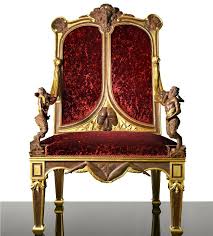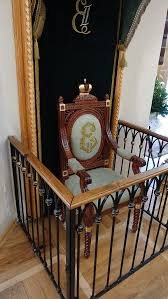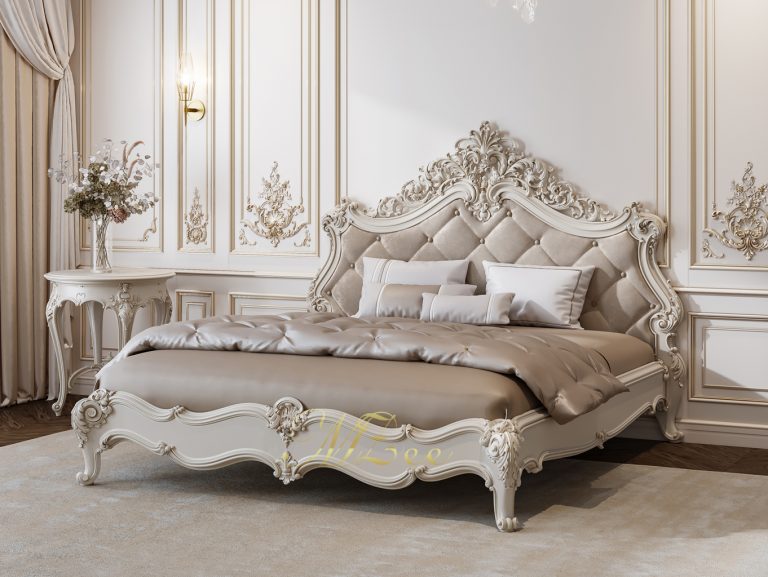Catherine great furniture embodies the opulent tastes of Russia’s legendary empress, blending European influences with native craftsmanship during her reign from 1762 to 1796.
As a patron of the arts, she commissioned pieces that reflected Enlightenment ideals, transforming palaces into showcases of power and elegance.
Her collections featured intricate designs in Rococo and Neoclassical styles, using materials like gilded wood, marble, and exotic inlays. These items not only furnished grand rooms but also symbolized Russia’s cultural ascent, with some shrouded in myths of hidden erotic elements discovered centuries later.
Furniture from her era survives in museums and palaces, offering glimpses into 18th-century imperial life. Crafted by masters like Charles Cameron and David Roentgen, these works balanced functionality with artistic flair, influencing designs across Europe.
Historical Context of Catherine Reign and Furniture Patronage
Catherine the Great, born Sophie of Anhalt-Zerbst in 1729, rose to power through a coup against her husband Peter III. Her 34-year rule marked Russia’s Golden Age, with expansions in territory and culture.

She viewed furniture as a tool for modernization. Establishing imperial workshops, she imported talents from France, Germany, and England while training local artisans.
This patronage elevated Russian design, merging foreign techniques with domestic materials like Karelian birch and Ural stones.
Her correspondence with philosophers like Voltaire inspired intellectual motifs in pieces, such as geometric patterns symbolizing order.
Palaces became testing grounds for these innovations, with each room tailored to specific themes.
Evolution of Styles in Catherine Great Furniture
Catherine’s early preferences leaned toward Rococo, characterized by playful curves and ornate details.
As her reign progressed, Neoclassical elements dominated, drawing from ancient Greek and Roman forms.
This shift mirrored her political alignment with Enlightenment rationality.
Rococo pieces often featured asymmetry, floral carvings, and pastel hues, evoking whimsy.
Neoclassical designs emphasized straight lines, fluted columns, and symmetry for a sense of grandeur.
A unique fusion emerged, where Rococo’s elegance met Neoclassical’s structure.
Materials included Cuban mahogany, satinwood, and ormolu mounts for durability and shine.
Upholstery used Lyon silk or velvet dyed with rare pigments like cochineal.
Craftsmanship involved marquetry with up to 15 wood types, creating trompe-l’oeil effects.
Pietra dura inlays incorporated jasper, lapis lazuli, and agate for vibrant accents.
Rococo Influences in Catherine’s Collections
Rococo style, imported from France, dominated her initial commissions.
Curved legs on chairs and tables mimicked natural forms like vines and shells.
Gilded oak frames added shimmer, enhancing palace lighting.
Floral motifs carved into wood symbolized fertility and growth, aligning with her reforms.
Playful asymmetry allowed for creative arrangements in informal rooms.
Pastel palettes in upholstery softened the imperial severity.
Examples include settees with brocade fabrics, designed for intimate gatherings.
These pieces contrasted with Baroque’s heavier grandeur from earlier reigns.
Catherine adapted Rococo to Russian tastes, incorporating folk elements like embroidered patterns.
Neoclassical Dominance and Innovations
By the 1770s, Neoclassical style took hold, influenced by architects like Charles Cameron.
Straight, fluted legs evoked Doric columns, promoting classical harmony.
Symmetrical layouts in desks and cabinets reflected ordered governance.
Greek frets and acanthus leaves adorned surfaces, nodding to antiquity.
Mechanical innovations, like automatic drawers in tables by David Roentgen, added theatrical flair.
Cuban mahogany provided rich tones, paired with marble tops for stability.
Satinwood veneers created light, airy effects in drawing rooms.
Marquetry depicted scenes from mythology, educating viewers subtly.
Pietra dura panels used semi-precious stones for durable beauty.
This style positioned Russia as a sophisticated European power.
Key Palaces and Their Furniture Highlights
Catherine’s residences housed her finest collections, each palace unique in theme.
Tsarskoye Selo, her summer retreat, featured opulent interiors.
Pavlovsk Palace showcased Cameron’s designs for her son Paul.
Gatchina Palace held more private pieces, some linked to legends.
The Hermitage served as her personal gallery, with functional art.
Peterhof incorporated outdoor elements like wrought-iron seats.
Each site blended styles to suit seasonal or ceremonial needs.
Restorations post-WWII preserved many originals.
Catherine Palace: Center of Imperial Elegance

Located in Tsarskoye Selo, this palace underwent major redesigns under Catherine.
Initially Baroque under Elizabeth, it shifted to Neoclassical.
The Green Dining Room had pistachio walls with stucco figures by Ivan Martos.
Mahogany tables from England featured Russian gilded bronze mounts.
Chippendale card tables added English refinement.
The Blue Drawing Room combined Adam style with Chinoiserie, using white-and-blue silk wallpaper.
Chinese silk walls in Alexander I’s rooms held porcelain displays.
The Arabesque Room boasted painted ceilings and lapis lazuli accents.
Wedgwood jasper bas-reliefs decorated her bedroom.
Inlaid floors of rosewood, amaranth, and mahogany grounded the spaces.
These elements created cohesive, luxurious environments.
Pavlovsk Palace: Neoclassical Mastery
Designed for her son, Pavlovsk emphasized Louis XVI influences.
The Greek Hall contained klismos-curved chairs and Lyon silk settees.
Heavy armchairs by Georges Jacob inspired local replicas.
Mahogany and rosewood pieces harmonized with tapestries.
Stools and couches matched wall colors for unity.
Grecian Hall stools followed ancient designs.
Folding wrought-iron armchairs suited terraces.
Blue Cabinet featured white silk upholstery with tinted accents.
Silver and Red Cabinets used vivid hues for contrast.
These designs highlighted disciplined craftsmanship.
Hermitage and Private Retreats
The Hermitage Museum originated from her art acquisitions.
Private rooms displayed mechanical tables with secret compartments.
Writing desks had geometric marquetry for intellectual pursuits.
“Catherine” armchairs by the Gambs Brothers featured oval medallion backs.
Velvet upholstery in rare dyes added tactile luxury.
Amber inlays evoked the famous Amber Room.
Ormolu mounts on consoles provided golden highlights.
These pieces blended utility with display.
Gatchina Palace and Mythical Elements
Gatchina, a fortified retreat, housed more intimate furnishings.
Rumors suggest a hidden “erotic cabinet” here.
Alleged pieces included explicit carvings on chairs and tables.
Discovered in 1941 by invading forces, photographed before destruction.
Debates question if they were hers or later additions.
If real, they reflected private tastes amid public restraint.
Standard furniture included gilded screens and desks.
The palace’s wall decorations complemented these items.
Peterhof and Outdoor Furnishings
Peterhof’s gardens featured durable outdoor pieces.
Wrought-iron chairs in Greek style by Cameron.
Marble benches with bronze accents.
Indoor rooms had lacquered finishes for humidity resistance.
Vases of Ural stone decorated entablatures.
These extended interior elegance to exteriors.
Notable Antique Pieces from Catherine’s Era
Specific items define her legacy.
A secretaire in her bedroom at Tsarskoye Selo, with hidden drawers.
Sofas in accentuated Louis XVI style at Pavlovsk.
Consoles with green or yellow marble tops.
Candelabra in carved wood for galleries.
Fire-dogs with griffons in gilt bronze.
Chandeliers with colored glass in bedrooms.
Candlesticks on marble pedestals.
Bronze capitals on porphyry columns.
These showcased material diversity.
Russian Marquetry and Craftsmanship
Marquetry flourished under her rule.
Using colored woods like birch and oak.
Patterns created illusions of depth.
Cabinetmakers like Andrey Voronikhin excelled in trompe-l’oeil.
Matvey Veretennikov specialized in pietra dura.
The Gambs Brothers produced iconic armchairs.
Imperial bronze ateliers directed by Charlemagne.
National Manufacture wove Beauvais-style tapestries.
These techniques blended local and imported skills.
Erotic Furniture Legends and Debates
Myths surround explicit pieces attributed to Catherine.
Rumored “erotic cabinet” with phallic motifs on furniture.
Tables with penis-shaped legs, vaginas carved on surfaces.
Chairs and screens adorned similarly.
Allegedly hidden after her death by son Paul I.
Discovered in WWII at Tsarskoye Selo or Gatchina.
Photographed by German soldiers before bombings.
Historians debate authenticity; some cite Nazi propaganda.
If real, part of a private sex room.
Tradition of erotic art dates to ancient times.
Catherine’s sexuality exaggerated to undermine her.
Evidence includes 1941 photos, but originals lost.
Replicas exist, colored by modern makers.
These tales contrast her public Enlightenment image.
Baroque Elements in Early Collections

Though she favored later styles, Baroque influences lingered.
Heavy designs from Peter’s era adapted.
Gilded stucco in halls complemented furniture.
Sculptures on pieces evoked drama.
These transitioned to lighter Rococo.
Interior Design Principles Under Catherine
Her designs prioritized cohesion.
Furniture matched walls, ceilings, floors.
Colors harmonized: blues, greens, golds.
Functionality included mechanical features.
Themes drew from mythology, nature.
Spaces for ceremony or privacy.
This approach influenced aristocratic homes.
Historic Furniture Pieces and Their Stories
The “love chair” myth, similar to Edward VII’s.
Mechanical tables by Roentgen, with automatic mechanisms.
Gilded chairs from the Green Dining Room.
Oval-backed armchairs recreated post-war.
Each piece told of craftsmanship and power.
Collections in Museums Today
Surviving items in Hermitage Museum.
Catherine Palace displays restored originals.
Pavlovsk preserves Cameron’s works.
Exhibits highlight marquetry techniques.
These attract visitors seeking imperial history.
Photos and Visual Representations
Black-and-white images from 1941 show explicit details.
Colored recreations depict vibrant gilding.
Palace photos reveal room arrangements.
Chair designs with fluted legs.
Bed frames with canopy supports.
These visuals aid understanding of scale.
Chair Designs in Catherine’s Palaces
Chairs varied by room.
Klismos curves in Greek Hall.
Folding iron for terraces.
Gilded with oval backs in receptions.
Mahogany frames for dining.
Upholstered in silk or velvet.
Bed and Closet Furniture Details
Beds featured canopies with embroidered drapes.
Four-poster designs in Neoclassical style.
Closets as wardrobes with marquetry doors.
Secret compartments for valuables.
Lacquered finishes in private chambers.
These ensured comfort and security.
Prize Pieces and Auction Values
Antique Catherine-era furniture fetches high prices.
Marquetry desks at $100,000+.
Gilded chairs from $20,000.
Bronze-mounted tables exceed $50,000.
Collectors value provenance.
Influence on Modern Interior Design
Her fusion inspires contemporary blends.
Neoclassical motifs in luxury homes.
Rococo curves in eclectic styles.
Materials like marble persist.
Designers reference her for opulence.
Preservation Efforts and Challenges
WWII damage required restorations.
Museums use original techniques.
Challenges include material sourcing.
Efforts maintain authenticity.
Cultural Significance of Catherine Great Furniture
Symbolized Russia’s enlightenment.
Elevated women’s roles in patronage.
Bridged East-West designs.
Legacy endures in art history.
FAQs
What defines Catherine great furniture style?
It blends Rococo curves and floral motifs with Neoclassical symmetry and classical elements, using gilded wood and marble.
Are there authentic Catherine the great antique furniture pieces?
Yes, surviving items like mahogany tables and gilded chairs exist in palaces like Tsarskoye Selo, crafted by masters like Cameron.
How did Russian imperial furniture evolve under Catherine the Great?
From Baroque heaviness to Rococo whimsy, then Neoclassical order, reflecting her Enlightenment influences.
What furniture adorned Catherine great palace rooms?
Green Dining Room had English mahogany tables; Blue Drawing Room featured silk wallpaper and porcelain displays.
Which 18th century Catherine the great furniture pieces are famous?
Mechanical tables by Roentgen with secret drawers and marquetry desks with trompe-l’oeil patterns stand out.
Did Catherine the great rococo furniture include unique features?
Yes, curved legs, asymmetry, and gilded floral carvings, adapted with Russian folk elements.
What are myths about Catherine the great baroque style furniture?
Rumors of erotic pieces with explicit carvings, debated as real or propaganda, allegedly hidden in private cabinets.
Conclusion of Catherine Great Furniture
Catherine great furniture captures the essence of an era where imperial ambition met artistic innovation, leaving a legacy of elegance that transcends time.
From the gilded Rococo curves of her early commissions to the structured Neoclassical lines of later works, these pieces reflected her vision for a modern Russia. Palaces like Tsarskoye Selo and Pavlovsk preserve this heritage, showcasing craftsmanship in marquetry, bronze, and stone.
Amid myths of hidden erotic elements, the true value lies in how her patronage elevated design, blending European sophistication with native ingenuity. Today, these masterpieces inspire collectors and designers, reminding us of a ruler whose influence shaped not just empires, but enduring styles in interior artistry.

